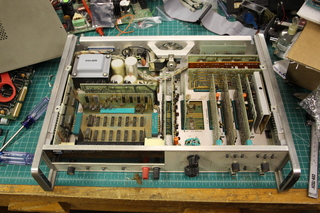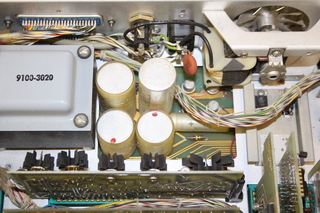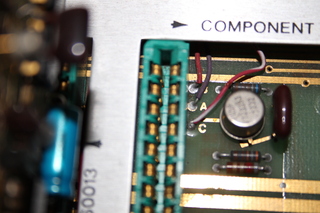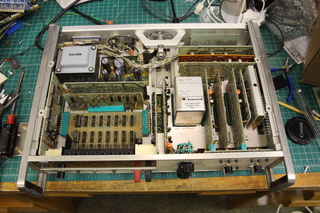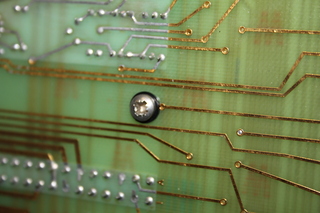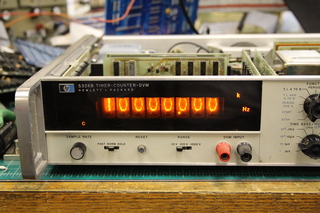Topic: Repairing and upgrading a HP 5326B Counter
Date: 2023 DEC 17
Burgess had this old HP 5326B Timer/Counter/DVM unit on the shelf in the stockroom since I was in college. It had been replaced by newer, smaller, more capable units even back then. I traded him for it as it’s still a useful tool and has a very nice Nixie tube readout. This is basically how I received it, top removed for inspection and servicing:
It wasn’t filthy inside, but did have a coating of the usual dust found in these forced air cooled instruments. There were a number of old aluminum electrolytic capacitors, releasing the usual old capacitor smell, and these were the first things to go:
With the big capacitors replaced, and a few smaller ones on one of the plugboards that were obviously leaking, the unit came up and partially operated. Experienced trouble turned out to be dirty edge connectors, so all of the plugboards were pulled and cleaned with alcohol. The edge connector sockets received a little De-Oxit Gold. This seemed to fix any intermittent connection issues, and the timer/counter section was now operating reliably!
As seen above, this 5326B had the standard A4 timebase in it. To make this unit more useful on the modern test bench, I decided to acquire and install a HP 10544A ovenized timebase, which provides much greater stability. With the precision that the 5326B is capable of, and the price of a used 10544A module, this upgrade made practical sense.
The first HP 10544A ordered from one of our usual surplus test equipment suppliers was a dud – we’ll tear it down in a later post (update: HP 10544A teardown here), but it never stabilized at 10 MHz. There was inadequate adjustment to even get it to 10 MHz, so something was clearly wrong. Additionally, the heater monitor outputs gave strange results. They sent another, which was tested in a fixture before installation in the 5326B (we’d built a fixture to confirm the first 10544A was having issues).
After installing the new 10544A in the counter, we were still having issues with frequency stability and weird readings from the oven monitor outputs. This turned out to be a factory wiring error in the 5326B! The flywires that supply the unregulated bipolar rails to the XA4 card edge connector were connected backwards from the factory as seen below:
It’s a little difficult to make out, but A and B leads are clearly reversed. Fortunately, this did not damage anything. The leads were swapped on the end near the XA4 connector – according to the schematics, A should be red and B should be violet.
Here’s a picture with the HP 10544A ovenized timebase installed:
Note that when installing, one of the retaining screws should have an insulating washer placed under it, as it’s pretty close to another trace:
After letting the timebase warm up and stabilize, and trimming it using our calibrated HP 5316B counter, the 5326B reads 10.000000 MHz when measuring a high stability 10 MHz oscillator:
It’s impressive to see so many zeros on a piece of test equipment this old! Accuracy and repeatability make the HP 5326B a still-useful device on the bench, and it’s always nice to put something with a Nixie display into useful service.
The 5326B includes a digital voltmeter function, which is partially working at this time. It will be diagnosed and repaired in a future writeup.
counter views counted
